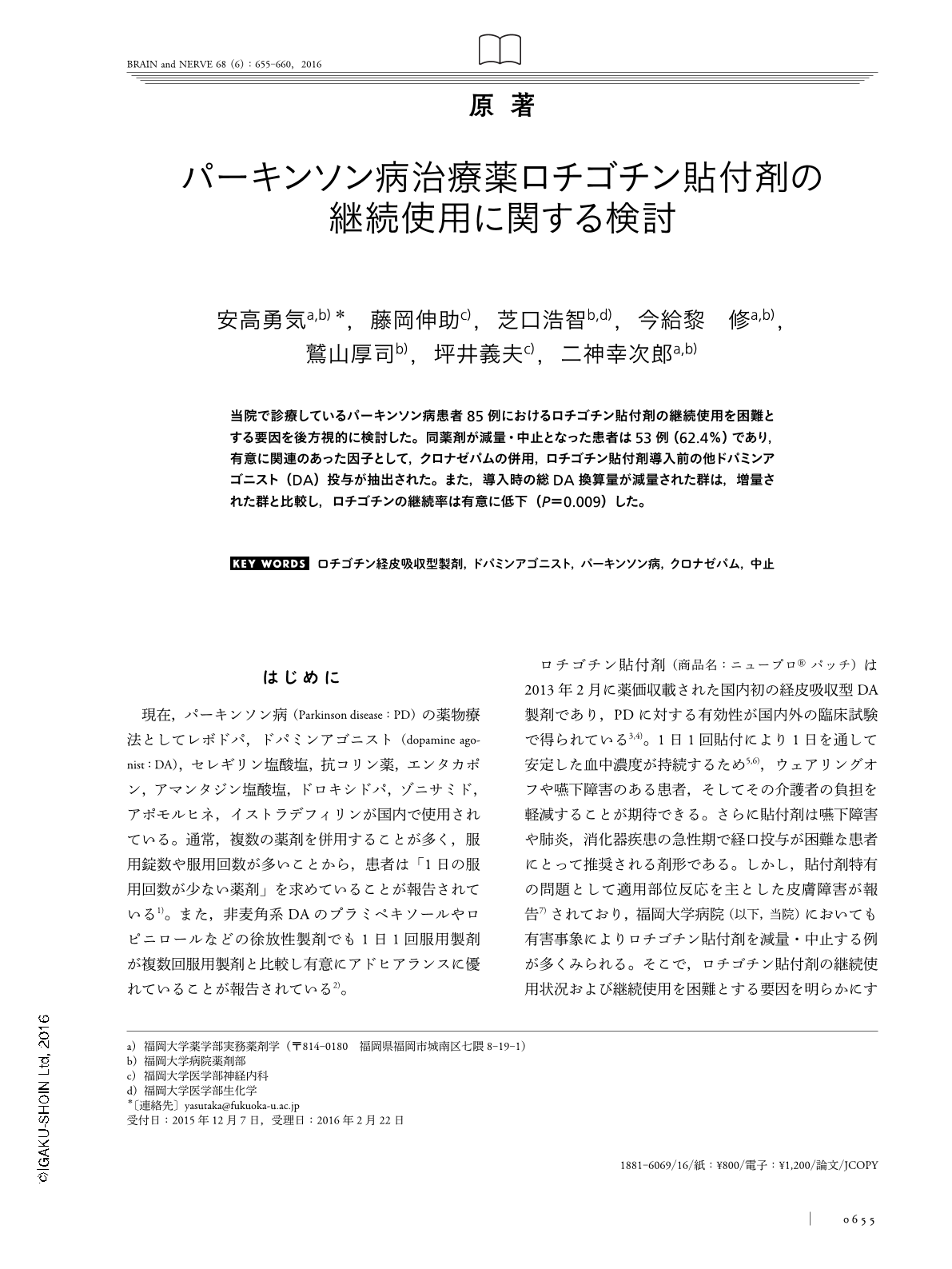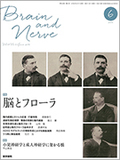Japanese
English
- 有料閲覧
- Abstract 文献概要
- 1ページ目 Look Inside
- 参考文献 Reference
当院で診療しているパーキンソン病患者85例におけるロチゴチン貼付剤の継続使用を困難とする要因を後方視的に検討した。同薬剤が減量・中止となった患者は53例(62.4%)であり,有意に関連のあった因子として,クロナゼパムの併用,ロチゴチン貼付剤導入前の他ドパミンアゴニスト(DA)投与が抽出された。また,導入時の総DA換算量が減量された群は,増量された群と比較し,ロチゴチンの継続率は有意に低下(P=0.009)した。
Abstract
Transdermal patches containing rotigotine, a dopamine agonist (DA) for treatment of Parkinson disease, continuously exert stable effects when applied once daily. Therefore, they are expected to reduce the patient burdens due to complications such as wearing-off and dysphagia. However, dosing is occasionally reduced or discontinued after application because of several reasons such as skin reactions or unsatisfactory efficacy. To identify the risk factors involved in the reduced or discontinued use of rotigotine patches, a retrospective study was conducted with reference to the medical records of patients with Parkinson disease who received rotigotine patches in our hospital. 85 patients were involved in this study. Dosing of rotigotine was reduced or discontinued in 53 patients during the study period. The factors associated with charges in treatment included combination therapy with clonazepam and oral administration of another DA before the application of rotigotine. The reduction or discontinuation rate of rotigotine patches in patients who reduced the equivalent dose of DA on the introduction of rotigotine patches was 94.7%, showing a significantly higher rate compared with 61.3% in the increased dose group. To improve adherence to rotigotine patch therapy, physicians need to carefully consider concomitant drugs and total dose of DAs.
(Received December 7, 2015; Accepted February 22, 2016; Published June 1, 2016)

Copyright © 2016, Igaku-Shoin Ltd. All rights reserved.


